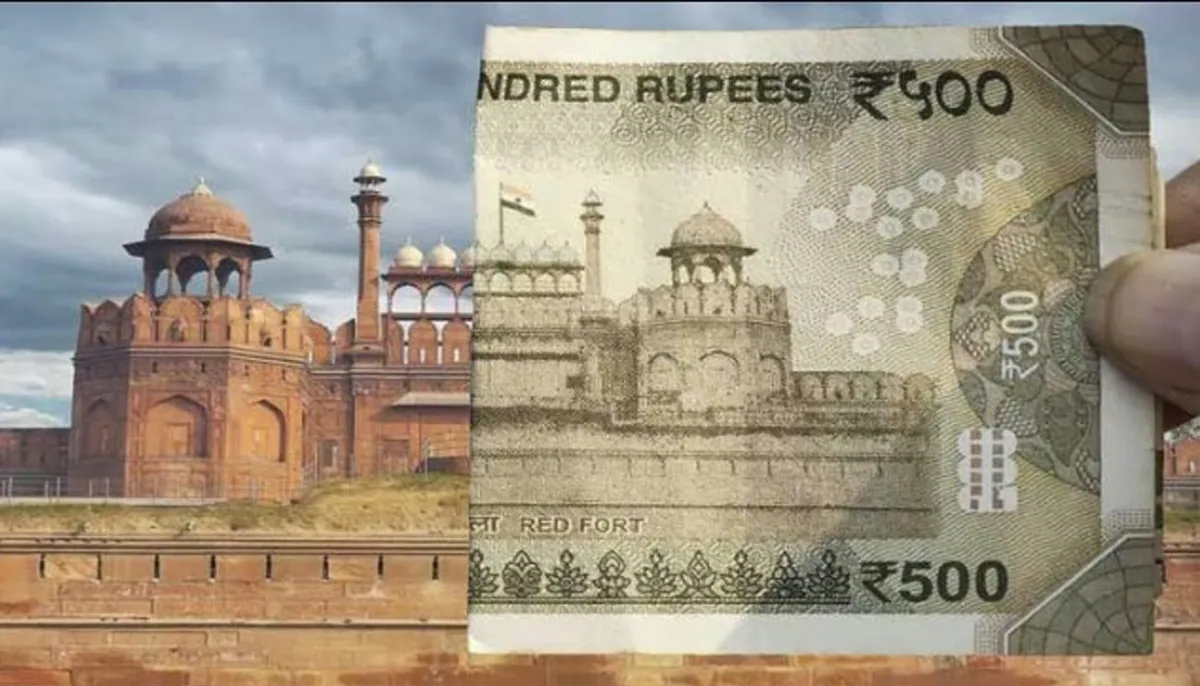Red Fort to Kailash temple: Viral twitter thread shows monument printed on Indian currency notes
Red Fort to Kailash temple: Viral twitter thread shows monument printed on Indian currency notes
Mangalore Today News Network / NDTV
May 05, 2023: Most of us have moved to online modes of payment in the past couple of years. However, there is a different feeling when one holds a currency note- maybe it’s the texture or maybe it is the physical presence of what is deemed as money that holds more significance in our lives. If one takes a close look at the currency notes, one will notice that the notes also exhibit glimpses into a country’s cultural and historical heritage. Our currency notes feature images of India’s famous monuments and landmarks. This was brought to light by an internet user who posted a thread exploring the historical sites printed on the notes.

A Twitter user, who has the handle Desi Thug, shared the same. "Historical Monuments and Events Printed on Indian Currency Notes," he said in the post. He shared a ₹ 10 currency note which features the Sun Temple in Konark against the backdrop of the temple.
Historical Monuments and Events Printed on Indian Currency Notes
— Desi Thug (@desi_thug1) April 28, 2023
1. Konark Mandir - 10 Rs Note pic.twitter.com/NWkdxk9pky
As per UNESCO, it is a monumental representation of the sun god Surya’s chariot and its 24 wheels are decorated with symbolic designs and it is led by a team of six horses. It was built in the 13th century.
3. Hampi Stone Chariot - 50 Rs Note pic.twitter.com/tVotvlc1Ee
— Desi Thug (@desi_thug1) April 28, 2023
The next post features the Kailash Temple in Ellora, which is depicted on a ₹ 20 currency note. The temple is one of the largest rock-cut temples in the country and is also a UNESCO World Heritage Site.
6. Lal Qila - 500 Rs Note pic.twitter.com/JxhDBtL54T
— Desi Thug (@desi_thug1) April 28, 2023
The Hampi Stone Chariot is seen on the fluorescent blue ₹ 50 note while the ₹ 100 currency note depicts Rani Ki Vav, located in Gujarat. The stepwell was built in 1063 by Rani Udayamati of the Chaulukya Dynasty.
The user also pointed out that the famous Sanchi Stupa, located in Madhya Pradesh, is printed on the backside of a ₹ 200 currency note. It was built by Emperor Ashoka in the third century BC. Meanwhile, the Red Fort is shown on the back of the ₹ 500 note.
Concluding the post, the user added that the largest Indian denomination note, ₹ 2000, does not feature a monument but a landmark event. The magenta note shows the Mangalyaan, India’s first successful Mars mission.
Since being shared, the post has amassed over 1.7 million views and 23,000 likes.
- Mangaluru Press Club Honorary Award announced
- Justice KS Hegde hospital launches state-of-the-art Robotic Surgery
- Manipal: West Bengal origin man jumps to death from 4th floor
- Udupi: Man arrested for operating sex trade racket; woman rescued
- Drugs peddling case: Court sentences man to two and a half years RI
- Mangaluru: Tulu Film Producers’ Association submit memorandum to CM
- Karkala: MBA student ends life, jumping into a well
- MRPL flags off its first Toluene parcel
- Students oppose fee for corrections in II PUC marks card
- Online investment fraud: Mangaluru and Udupi residents lose over ₹27 lakh
- Mangaluru Police crack Kotekar Cooperative Society’s robbery case, arrest three
- MCC spending Rs 1.5 crore on each STP, still sewage water flowing in gutters: Ivan D’Souza
- Uchila: Hundreds block NH 66 to protest against serial accidents
- In Varanasi, monkey gives tough competition to humans in kite flying
- 3000-year-old religious shrine discovered in heart of Jerusalem
- Kerala man declared ’dead’ found alive before being taken to hospital mortuary
- Army Chief justifies removal of iconic picture of Pakistan’s surrender in 1971 war
- Makar Sankranti 2025: rituals, myths, significance, and why it’s celebrated
- Meet Aria, the Rs 1.5 crore AI Robot Girlfriend that’s both fascinating and frightening
- US lottery winner of $2 billion loses entire Los Angeles mansion in wildfires
- Rs 2,10,42,08,405: Himachal man shocked over faulty electricity bill
- Chinese woman with 2 reproductive systems becomes ’Mother’ and ’Father’
- Stranded to stardom: Meet Rani, a monkey who masters household chores
- 3’8 tall Chhotu Baba is Maha Kumbh attraction. He hasn’t bathed for 32 years
- Telangana drill man stops 57 fans with his tongue, sets guinness world record
- Quadrantid Meteor Shower to peak on January 3 and 4: When, where to watch in India
- 30-year-old woman found stabbed to death in Kerala
- Mallikarjun Kharge unveils Mahatma Gandhi statue in Belagavi
- 12 Naxalites killed in encounter with security forces in Chhattisgarh’s Gariaband
- Bengal challenges life term for RG Kar convict, demands death penalty in High Court
- Usha becomes first Indian-American Second Lady as JD Vance takes oath as US Vice President
- BJP to hold 3 meetings on January 21 amid infighting
- Bengaluru woman, going to her brother’s house, raped by 2 men who gave her lift
- Trump returns to White House, signs orders to pardon rioters, exit paris pact
- Delhi polls: AAP launches blank book on BJP’s ’achievements’ ahead of polls
- Soldier killed in encounter with terrorists in J&K’s Sopore
- Pregnant cow slaughtered in Karnataka; Siddaramaiah govt ’taking matter seriously’
- RG Kar case convict gets life term, judge says case not rarest of rare
- CITY INFORMATION
- TRAVEL
- TOURIST INFORMATION
- HEALTH CARE
- MISCELLANEOUS




 Write Comment
Write Comment E-Mail
E-Mail Facebook
Facebook Twitter
Twitter  Print
Print 



